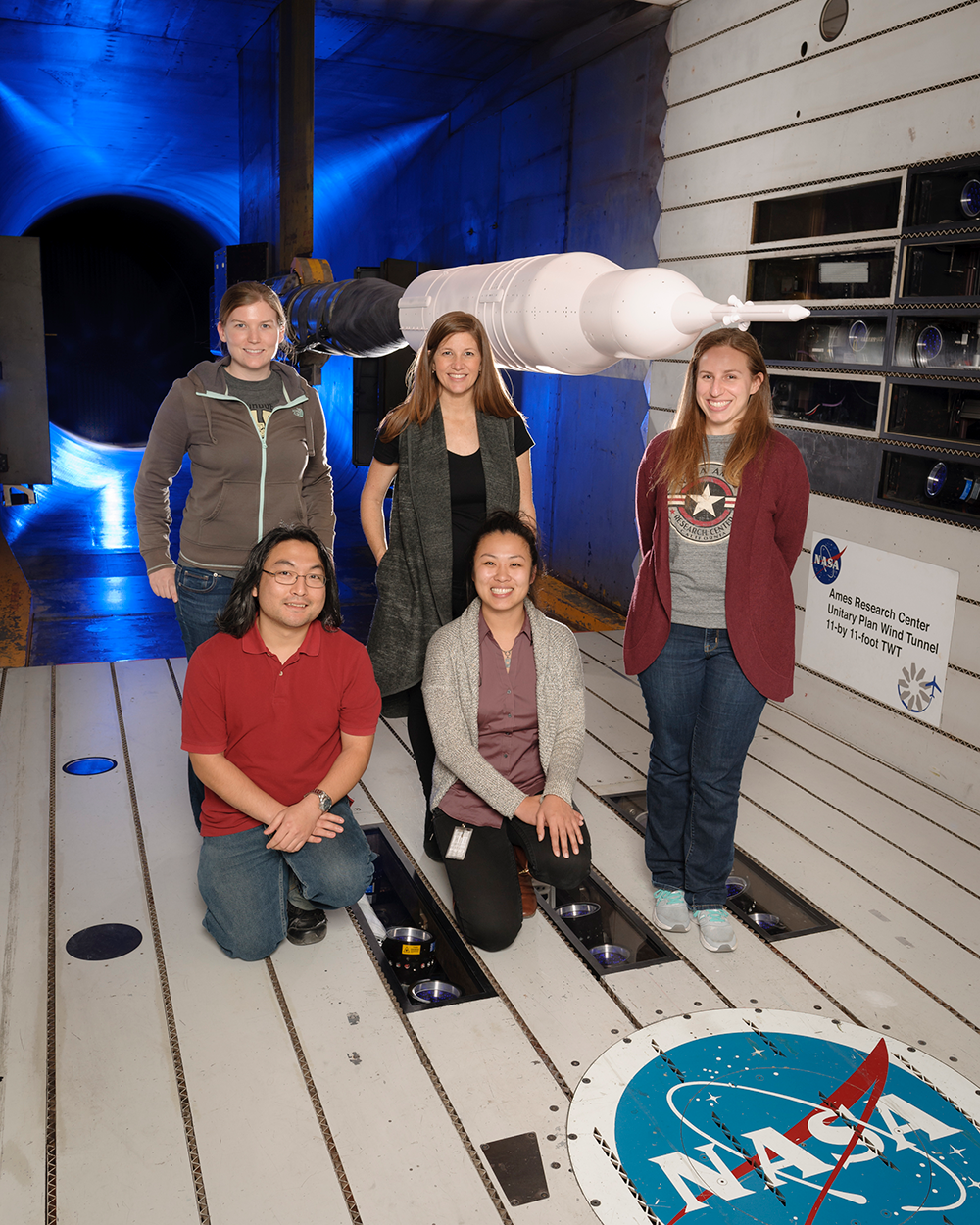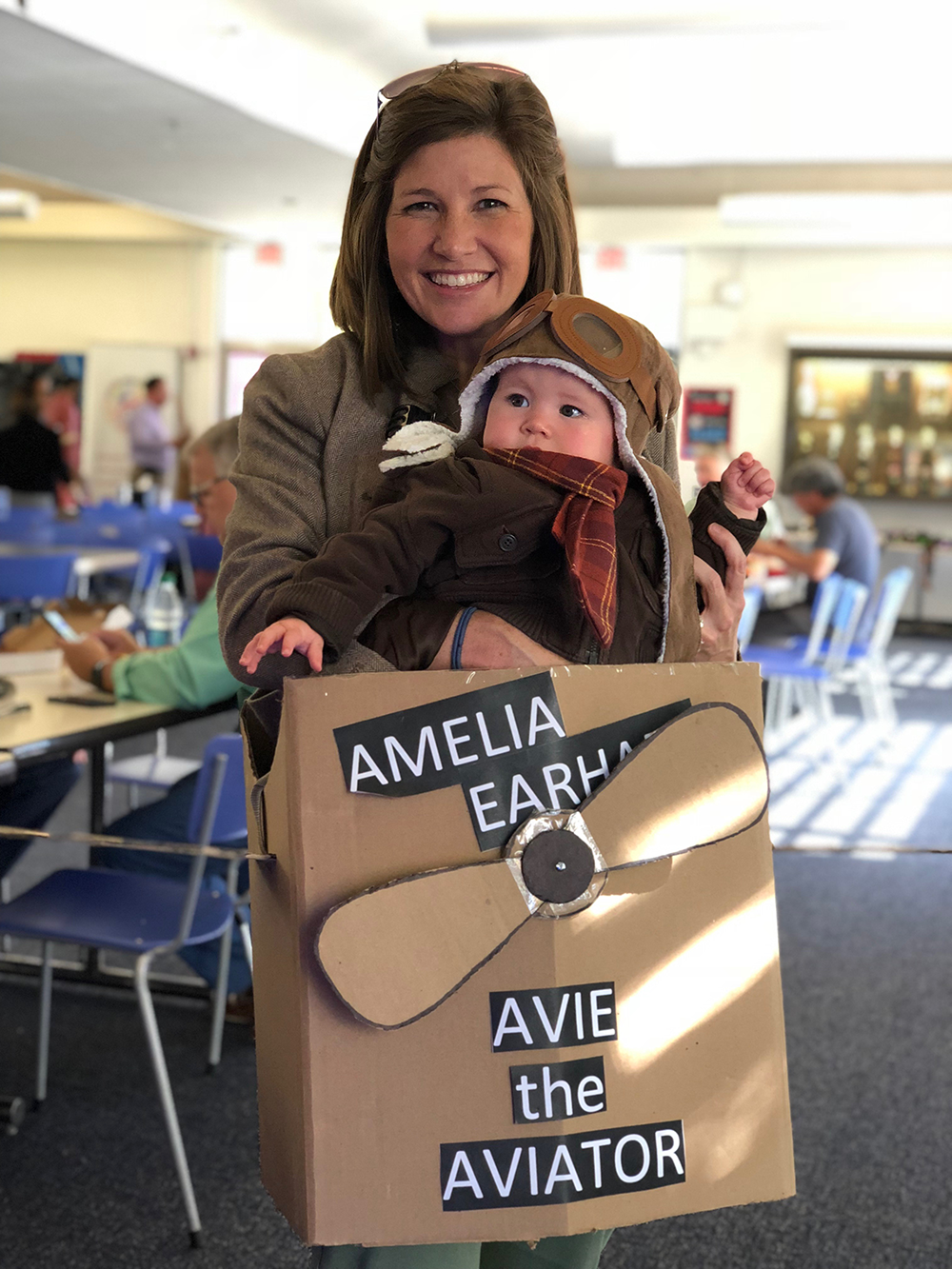AIAA Member Spotlight – November 2018 Written 14 November 2018
Engineer Keeps Her Footing Working in NASA Wind Tunnel
By Michele McDonald, AIAA Communications Manager

Nettie Roozeboom knows how to keep moving--whether it’s conducting research in wind tunnels or on the track.
An aerospace engineer at the Fluid Mechanics Lab at NASA Ames Research Center, Roozeboom’s research will help usher in the next generation of aircraft and spacecraft. Her focus and ability to keep her equilibrium is a skill she put has through the paces since before college.
She attended the University of Tennessee at Chattanooga on a full athletic scholarship for cross country, indoor track, and outdoor track. “Undergraduate life for me was a fine balance between school and athletics,” she said. “I spent my evenings and summers training.”

Her dedication paid off. She landed an internship in the summer of her senior year in 2007 from NASA Ames Research Center.
“After the internship, I learned the combination of excellent grades and a successful athletic career caught the eye of the individuals who mentored me,” said Roozeboom, who was featured in a NASA in Silicon Valley podcast.
Mentors have helped guide her steps, in particular AIAA member Steve Beard, Roozeboom said. “Steve Beard helped me see where my strengths were and helped highlight what differentiated me from other talented engineers. His investment in me and encouraging words still motivate me today.”
Roozeboom has some tips for interns: “To other young engineers pursuing internships, my advice to you would be once you start an internship, go around to others in the building and talk to them. Find out what they do, what is their background, talk to them about what their hobbies are. Get to know others. You never know, they may be looking for a young, talented engineer with communication skills (never underestimate the power to communicate).”
Roozeboom further honed her delicate balance while working at NASA full-time and earning her graduate degree in Mechanical Engineering from Stanford University.
“The most challenging part was working with very talented people while attending graduate school with also very talented people. It was challenging to balance the demand of graduate school at one of the top universities/engineering programs in the world while also starting my career at the most desired aerospace agency in the world.
“The most rewarding part was graduation day. I knew I was strong, and I knew I would excel, but when finally accomplishing this three-year journey, I felt more rewarded about achieving this goal than any other goal I had achieved. Looking back, the mental and physical training of being a student-athlete helped prepare me for this challenge.”
And the result is research that will shape future aircraft and spacecraft. Roozeboom is focused on pressure-sensitive paint (PSP) research. In wind tunnel testing, aerodynamic force measurements and pressure measurements are of highest interest. To gain a more global view of pressure distribution with finer resolution than that of the traditional pressure taps, PSP is used. PSP is a luminescent coating that senses and measures pressure distribution on a wind tunnel model. She’s currently focused on maturing the application of unsteady pressure-sensitive paint (uPSP) from a research laboratory environment to a production-style wind tunnel. Now with unsteady PSP, the global distribution of pressure can be sensed up to 25kHz.
Roozeboom sees unsteady PSP as a transformative technology.

"I see this technology revolutionizing the way we assess unsteady aero,” she said. “I view this data as the holy grail. However, it must be stated this is not the only tool in the toolbox.”
Adding big data to the mix could result in better use of time and facilities, Roozeboom noted. “If we could leverage the power supercomputers can bring to solving a problem and really have them direct what we need to do in a closed-loop fashion, it would be inspiring to brainstorm what we could do then,” she said.
Her goal is to deploy the unsteady pressure-sensitive measurement technique in all major NASA wind tunnels within the next three years and make the software open to the greater aeroscience community. Also, a goal with the PSP is to use this technology as a conduit to bring both the experimental and computational communities and facilities closer together.
Attending AIAA forums helps Roozeboom stay connected to her peers and the latest research. She’s an active AIAA member and can be seen rushing between meetings at AIAA forums.
“The investment to be an AIAA member is small, but the rewards are huge,” she said. “Being involved within AIAA has been one of the single most important actions I have taken as a professional.”
Aerospace engineering is an exciting and broad field, needing more engineers to tackle problems from developing new X-planes to the world’s largest rocket to send humans into deep space. The opportunities are numerous and impactful.
Roozeboom recalls her favorite quote from Neil Armstrong describing what he thought as a first-year college student when Charles E. Yeager broke the sound barrier in 1947:
“All in all, for someone who was immersed in, fascinated by, and dedicated to flight, I was disappointed by the wrinkle in history that had brought me along one generation late. I had missed all the great time and adventures in flight.”
“This quote really hits home to me and reflects similar feelings I had when I arrived at NASA. Shortly after arriving, the Shuttle Program retired, the program to replace Shuttle, Constellation, was cancelled. I yearned to make a contribution to the nation and in that moment, I felt all the great moments of exploration were merely a memory.

“I also had similar thoughts when starting as a researcher in pressure-sensitive paint—all the fun, exciting times had seen their debut. Now I reflect on where I am at in my career and what NASA is accomplishing and I am in awe. The most memorable thought is my fingerprint is on X-59, my fingerprint is on the Orion capsule, my fingerprint is on the Space Launch System (SLS). This is an exciting time in the field of aeronautics, and I am very much a part of it.”
Roozeboom enjoys visits home to Tennessee where “my brother and I played outside and used our hands and our imagination to build play structures.” She grew up in a rural part of the state between NASA Marshall Space Flight Center in Huntsville, AL (Rock City, USA) and the Air Force's Arnold Engineering Development Complex (AEDC), both well known for their contributions to the aerospace sector.
Her dedication to aerospace appears in all areas of her life.
“I welcomed my daughter, Avie (like aviation) Victoria, into the world on Pi Day this past year. Now, I enjoyed taking her for runs with me and dressing her up as Amelia Earhart for Halloween.”
